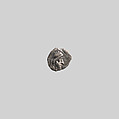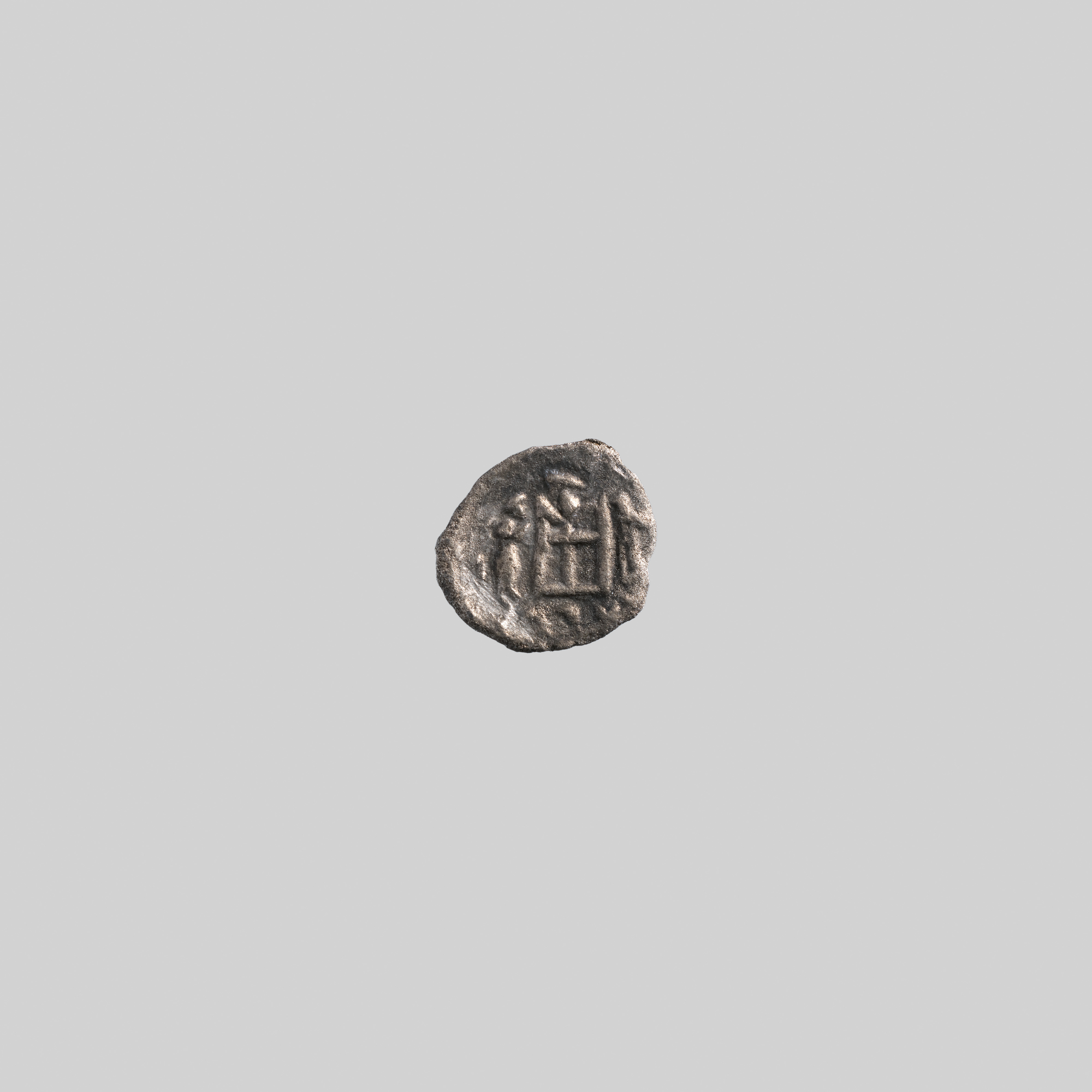Obol
Not on view
Numismatists – the scholars who study coins – refer to the ‘front’ side of the coin, which usually features the head of a person or god, as the ‘obverse,’ and the ‘back’ side as the ‘reverse.’
On the obverse of this small silver coin, a bust of the king faces to the right. He has a long beard, a large nose, and wears a diadem (the headband worn by victorious athletes in ancient Greece). The reverse shows a figure facing right standing before a structure. The structure is surmounted by two triangular crenellations, and is bisected by a vertical line, suggesting perhaps that it has doors. Above the structure is a dot under a horizontal line. A Persian inscription, only partially preserved, is at the bottom of the scene.
This coin was minted by King Vadfradad III of Persis, called Autophradates in Greek, sometime in the first century B.C. Persis refers to a region in southwestern Iran which was the heartland of the Achaemenid Empire. Under the Seleucids and Parthians, Persis was ruled by client kings like Vadfradad, who combined elements of Achaemenid, Seleucid and Parthian iconography on their coins. The diadem worn by Vadfradad, for example, is a common feature on images of Seleucid kings. The structure on the reverse has been interpreted variously as an altar or a temple.
This coin was excavated at Qasr-i Abu Nasr, near Shiraz. Much of the material from the site dates to the Sasanian period (A.D. 224-651); this coin is one the few objects suggesting it was occupied in the Parthian period as well.
Due to rights restrictions, this image cannot be enlarged, viewed at full screen, or downloaded.
This artwork is meant to be viewed from right to left. Scroll left to view more.



